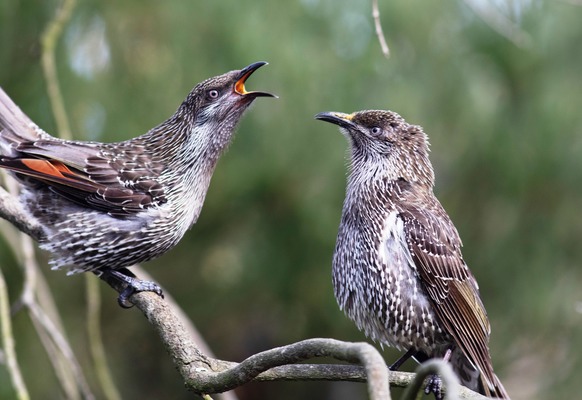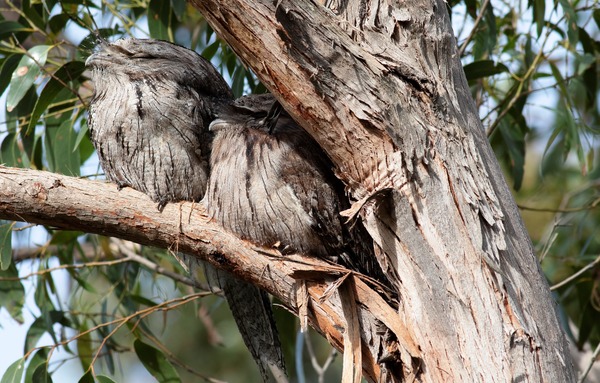As I write this I’m looking at the window at the bird activity in my garden, and I think spring is in the air.
The red-rumped parrots are hanging around their nesting box, and the honeyeaters are devouring the nectar on the banksia flower.
I hung a small nesting box in the garden recently to try and attract a pair of spotted pardalotes to a nest as I’ve had many of these beautiful birds hopping around the trees in my garden looking for insects. Hopefully they will find the nesting box and use it.
I’ve seen an eastern spinebill and a white-naped honeyeater (as well as numerous New Holland honeyeaters) feeding on the banksia flower over the past few weeks, which has been exciting (although they were too quick to fly off before I managed a photo).
Near my house in Ocean Grove there’s a little oasis for honeyeaters as there are many flowering grevilleas, where I’ve manage to spot and photograph little wattlebirds, eastern spinebills and red wattlebirds.
I think there is a family of little wattlebirds in my neighbourhood as some of the birds have a brown eye (a characteristic of a younger bird), whereas adult birds have a light blue eye.
The little wattlebird is the smallest of the three wattlebird species in Australia, and I think they are the most attractive, with the rufous colour on the wing and the striped tail.
I watched an eastern spinebill move around a flowering ground cover plant and realised that these birds feeding on these plants make them very vulnerable to predation by cats.
It’s much better for birds to be high up in a tree rather than on the ground.
Eastern Spinebills (especially the males) are just beautiful birds, with their long, fine, down-curved beak and a black, rufous, white and brown plumage.
Speaking of cats, recent research has found that cats kill one million birds a day in Australia. The researchers found evidence of cats killing 338 bird types—almost half of Australia’s native species, including 71 threatened species such as the spotted quail thrush, the squatter pigeon, and the night parrot. How shocking.
I was walking to my little oasis last week when I saw a black cat high up in a tree near a red wattlebird nest. The red wattlebird was very vocal which drew me to what was going on. I poked the cat with a stick to get it to climb down. No animals were injured in this procedure and more importantly the black cat did not cross my path and it did not get to the nest.
After chasing the cat away I looked up and a peregrine falcon flew over my head again for the second time in two weeks, which was amazing.
I’ve been trying to spot the tawny frogmouths pair that I visit regularly, but they have been typically elusive up until the other day, when I managed to see them.
I’ve read that in the winter the tawnies roost on a branch that faces north so that they absorb the warmth from the sun, and on the day I saw them they were on a branch facing north, but there was no sun and no warmth – it was freezing!
I was just very pleased to see them and know that they are, for the time being, thriving. I received an email from Maddie who works with Barwon Coast, and she told me that a deceased boobook owl was found in Barwon Heads that was very malnourished (as it was ‘skin and bone’). I’ve heard that the lack of insects (because of the excessive use of pesticides) is affecting populations of birds such as these, which is very alarming. Maddie also told me that a pair of black kites have been seen regularly, foraging at Ocean Grove Spit just north of 21W estuary side.
I don’t think this is good for the hooded plovers who nest in that area, so I’ll have to chase them away when I’m on hooded plover minding duty over the summer.











